#bitesizedcodingwithyoungwonks resultados de búsqueda
A list is used to store multiple #items. Shared here is an example of a list called Fruits. Follow us for more such #bitesizedcodingwithYoungWonks #pythonprogramming #kidscoding #lists #learningresources #pythoncheatsheet #Python #coding #programming
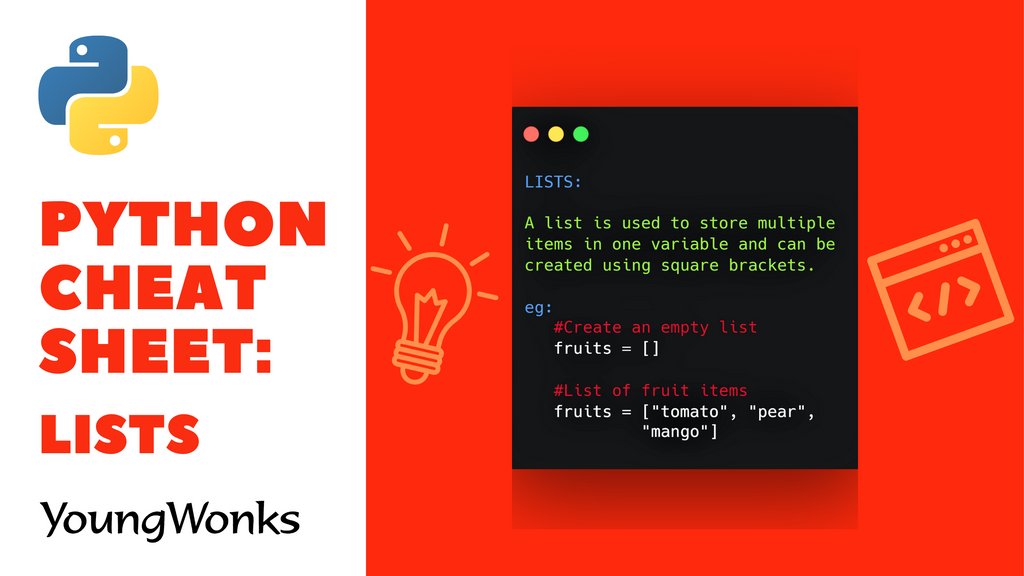
The #greater than (>) checks if the left #operand is greater than the right. Shared here is an example; follow us for more #bitesizedcodingwithYoungWonks #greaterthanoperator #pythonprogramming #kidscoding #learningresources #onlinelearning #STEM #Python #STEMkids #learnPython
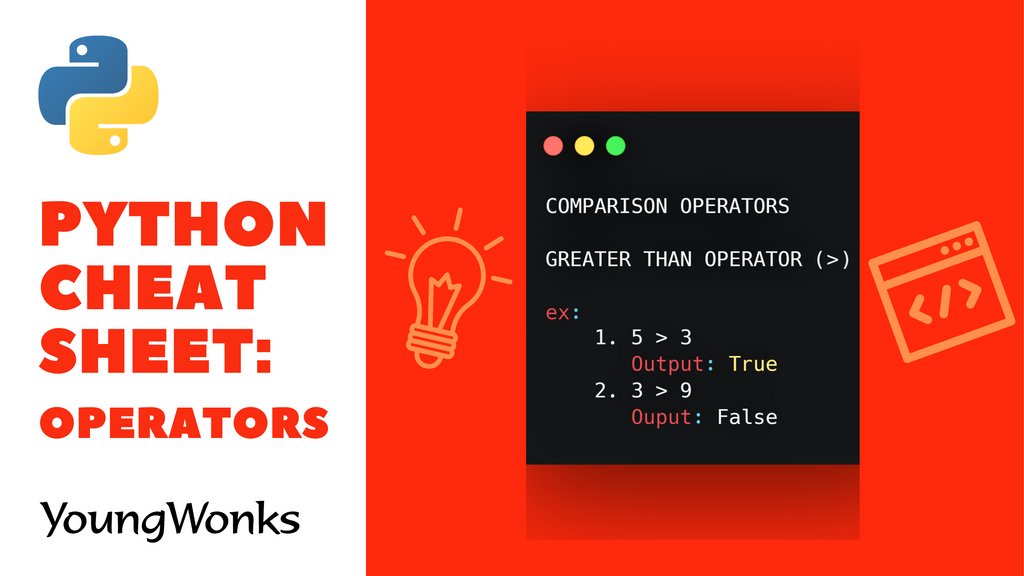
The greater than or equal to operator (>=) checks if the left #operand is greater than or equal to the right operand. Shared here is an eg. #operators #bitesizedcodingwithYoungWonks #pythonprogramming #kidscoding #learningresources #pythoncheatsheet #learntocode #STEMkids #python
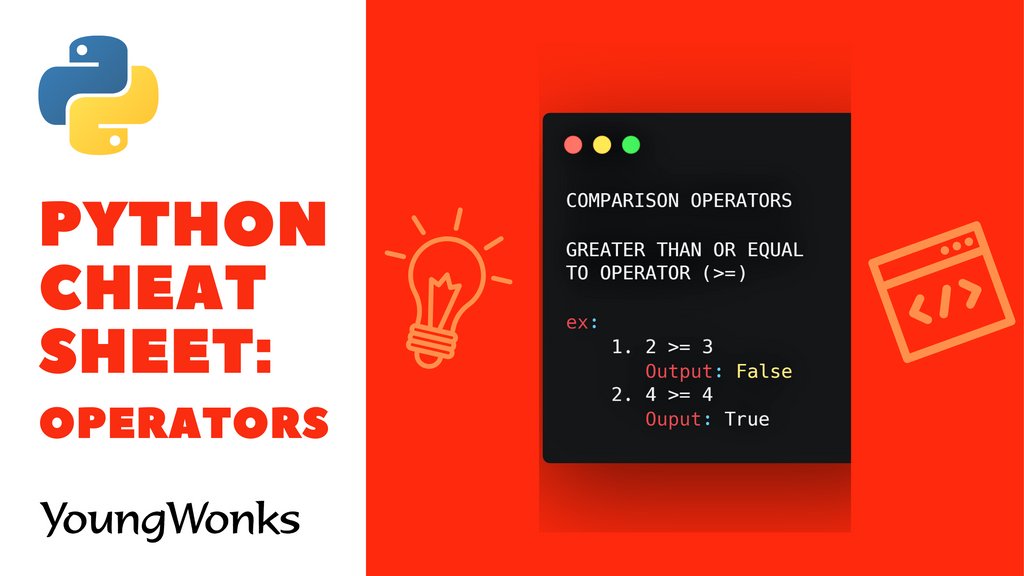
A #variable is like a container for storing data values. Shared here are a few examples. #datatypes #bitesizedcodingwithYoungWonks #pythonprogramming #codingforkids #learningresources #kidscoding #operators #python #pythoncheatsheet #onlinelearning #STEMkids

The #andoperator (and) returns True only if both of its #operands, the left and the right operands' conditions are True. Shared here is an eg. #bitesizedcodingwithYoungWonks #pythonprogramming #codingforkids #learningresources #python #codewithpython #onlinelearning #cheatsheet

The #inoperator checks if a value exists in a sequence or not. It evaluates to true if it finds the value in the specified sequence & false otherwise. Shared here is an eg. #bitesizedcodingwithYoungWonks #kidscoding #programming #learningresources #operators #python #STEMkids
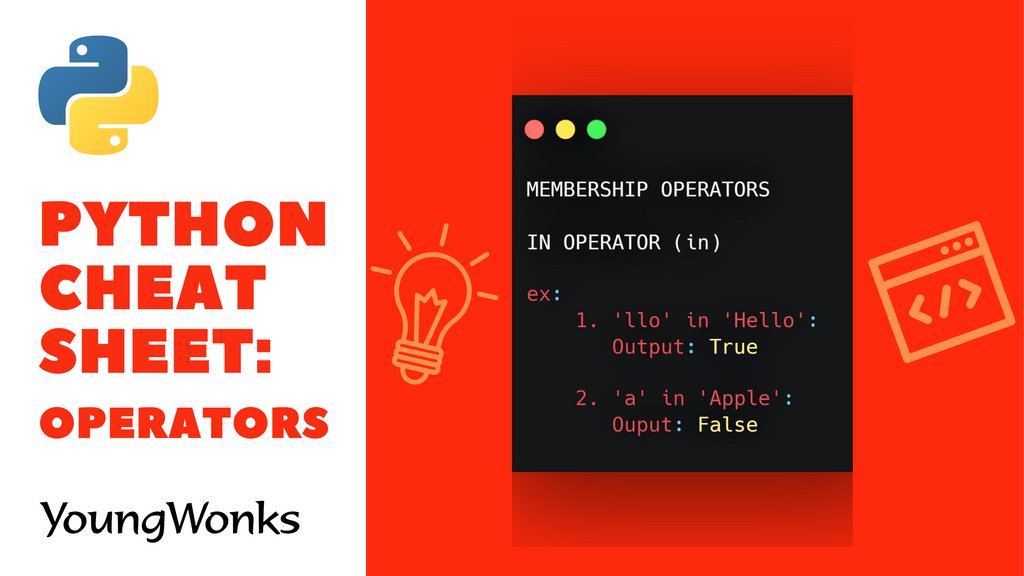
The #notinoperator is used to check if a value doesn't belong to a sequence. It evaluates to false if it finds the value in the specified sequence & true otherwise. Shared here is an eg. #bitesizedcodingwithYoungWonks #codingforkids #learningresources #operators #python #STEMkids

The #notoperator returns the negation of the result of an #operation. Shared here is an eg. Learn more at l8r.it/hUEy /#bitesizedcodingwithYoungWonks #pythonprogramming #codingforkids #learningresources #operator #python #pythoncheatsheet #onlinelearning
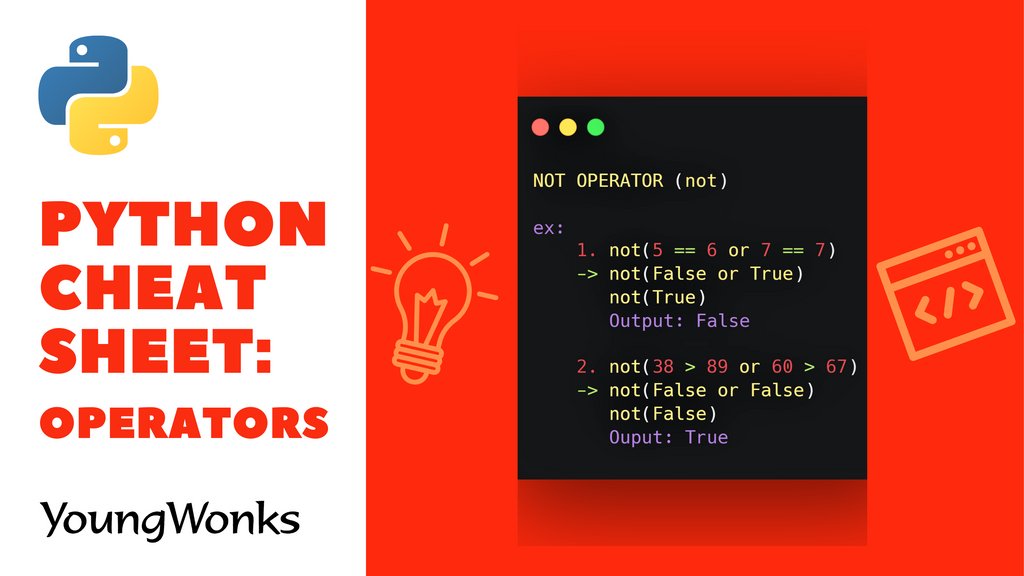
A #variable is like a container for storing data values. Shared here are a few examples. #datatypes #bitesizedcodingwithYoungWonks #pythonprogramming #codingforkids #learningresources #kidscoding #operators #python #pythoncheatsheet #onlinelearning #STEMkids

The #notinoperator is used to check if a value doesn't belong to a sequence. It evaluates to false if it finds the value in the specified sequence & true otherwise. Shared here is an eg. #bitesizedcodingwithYoungWonks #codingforkids #learningresources #operators #python #STEMkids

The #inoperator checks if a value exists in a sequence or not. It evaluates to true if it finds the value in the specified sequence & false otherwise. Shared here is an eg. #bitesizedcodingwithYoungWonks #kidscoding #programming #learningresources #operators #python #STEMkids

The #notoperator returns the negation of the result of an #operation. Shared here is an eg. Learn more at l8r.it/hUEy /#bitesizedcodingwithYoungWonks #pythonprogramming #codingforkids #learningresources #operator #python #pythoncheatsheet #onlinelearning

The #andoperator (and) returns True only if both of its #operands, the left and the right operands' conditions are True. Shared here is an eg. #bitesizedcodingwithYoungWonks #pythonprogramming #codingforkids #learningresources #python #codewithpython #onlinelearning #cheatsheet

The greater than or equal to operator (>=) checks if the left #operand is greater than or equal to the right operand. Shared here is an eg. #operators #bitesizedcodingwithYoungWonks #pythonprogramming #kidscoding #learningresources #pythoncheatsheet #learntocode #STEMkids #python

The #greater than (>) checks if the left #operand is greater than the right. Shared here is an example; follow us for more #bitesizedcodingwithYoungWonks #greaterthanoperator #pythonprogramming #kidscoding #learningresources #onlinelearning #STEM #Python #STEMkids #learnPython

The less than or equal to operator (<=) checks whether the left #operand is less than or equal to the right operand. Shared here is an eg. #bitesizedcodingwithYoungWonks #python #codingforkids #operator #codingforkids #learningresources #learnPython #stemkids #learntocode #STEM
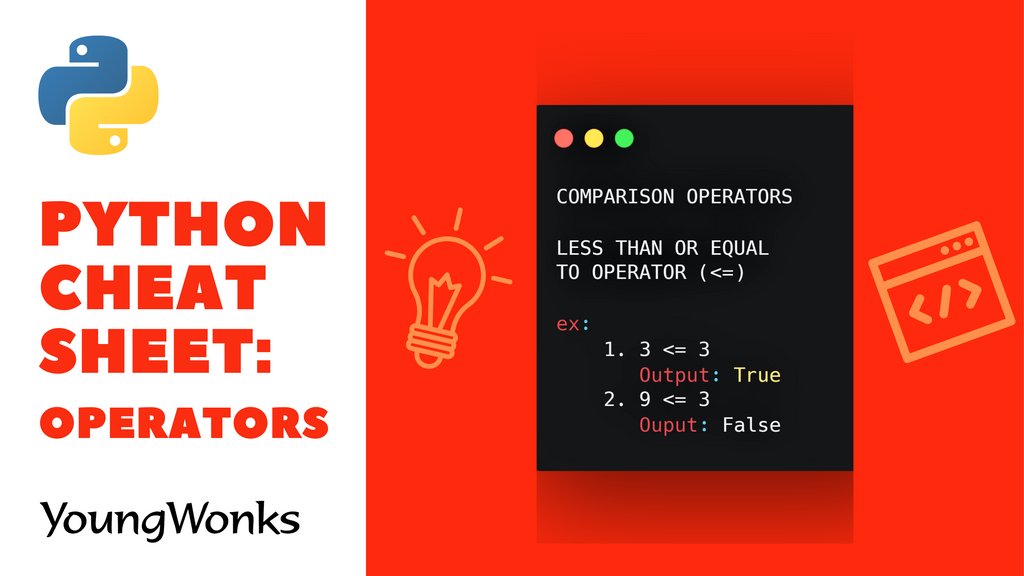
The #modulus operator (%) produces the remainder of its #operands where the left operand is the dividend & the right operand is the divisor. Here is an eg. Follow us for more #bitesizedcodingwithYoungWonks #python #codingforkids #learningresources #learnPython #stemkids #STEM

A list is used to store multiple #items. Shared here is an example of a list called Fruits. Follow us for more such #bitesizedcodingwithYoungWonks #pythonprogramming #kidscoding #lists #learningresources #pythoncheatsheet #Python #coding #programming

The #greater than (>) checks if the left #operand is greater than the right. Shared here is an example; follow us for more #bitesizedcodingwithYoungWonks #greaterthanoperator #pythonprogramming #kidscoding #learningresources #onlinelearning #STEM #Python #STEMkids #learnPython

The greater than or equal to operator (>=) checks if the left #operand is greater than or equal to the right operand. Shared here is an eg. #operators #bitesizedcodingwithYoungWonks #pythonprogramming #kidscoding #learningresources #pythoncheatsheet #learntocode #STEMkids #python

A #variable is like a container for storing data values. Shared here are a few examples. #datatypes #bitesizedcodingwithYoungWonks #pythonprogramming #codingforkids #learningresources #kidscoding #operators #python #pythoncheatsheet #onlinelearning #STEMkids

The #andoperator (and) returns True only if both of its #operands, the left and the right operands' conditions are True. Shared here is an eg. #bitesizedcodingwithYoungWonks #pythonprogramming #codingforkids #learningresources #python #codewithpython #onlinelearning #cheatsheet

The #inoperator checks if a value exists in a sequence or not. It evaluates to true if it finds the value in the specified sequence & false otherwise. Shared here is an eg. #bitesizedcodingwithYoungWonks #kidscoding #programming #learningresources #operators #python #STEMkids

The #notinoperator is used to check if a value doesn't belong to a sequence. It evaluates to false if it finds the value in the specified sequence & true otherwise. Shared here is an eg. #bitesizedcodingwithYoungWonks #codingforkids #learningresources #operators #python #STEMkids

The #notoperator returns the negation of the result of an #operation. Shared here is an eg. Learn more at l8r.it/hUEy /#bitesizedcodingwithYoungWonks #pythonprogramming #codingforkids #learningresources #operator #python #pythoncheatsheet #onlinelearning

Something went wrong.
Something went wrong.
United States Trends
- 1. #MerryChristmasJustin 3,437 posts
- 2. Danity Kane 2,320 posts
- 3. Slept 20.6K posts
- 4. UConn 7,762 posts
- 5. #bb27 N/A
- 6. Boogie Fland N/A
- 7. Aundrea 1,021 posts
- 8. #WWENXT 18.1K posts
- 9. Lamar Wilkerson 1,532 posts
- 10. Keanu 3,228 posts
- 11. Scottie Barnes 2,399 posts
- 12. #RHOSLC 4,618 posts
- 13. MSPs 2,151 posts
- 14. Raptors 11.6K posts
- 15. Cale Makar N/A
- 16. Gowdy 5,749 posts
- 17. Jalen Brunson 3,918 posts
- 18. Oilers 3,415 posts
- 19. Dan Hurley N/A
- 20. Malachi Smith N/A

